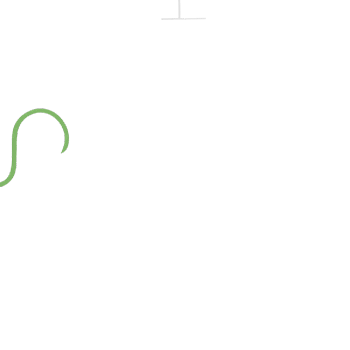Introduction
Acne vulgaris is a prevalent skin condition that affects millions of people worldwide. This article aims to provide a comprehensive understanding of acne vulgaris, including its causes,symptoms, treatment options, and preventive measures.
Acne vulgaris, more generally known simply as acne, is a chronic skin disorder that predominantly impacts the pilosebaceous units of the skin. Acne vulgaris is the most frequent kind of acne. Comedones, often known as blackheads and whiteheads, papules, pustules, nodules, and even scarring are all signs of this condition
Detailed Overview
Acne vulgaris is a skin condition that most commonly affects adolescents, however, anybody of any age can be affected by acne. Multiple causes, including an increase in sebum production, aberrant follicular keratinization (a condition in which the skin cells contained inside the hair follicles do not shed as they should), bacterial colonization (especially by Propionibacterium acnes), and inflammation, are responsible for its development.
Hormonal shifts, such as those that take place when a person is going through puberty or another important life transition, have a crucial influence on the development of acne. A person’s genetics, certain drugs, hormone imbalances, stress, and even their choice of cosmetics or skincare products can all play a role in the development of acne.
Acne manifests itself most frequently on the face, but it can also arise on the chest, back, shoulders, and other parts of the body that have a disproportionately high number of sebaceous glands. There is a vast range of possible severity levels for acne, from moderate, which is characterized by a few blemishes here and there, to severe, which is characterized by widespread inflammation and scarring.
Treatment Measures
Acne vulgaris can be treated with a variety of drugs and treatments, including topical medications (such as benzoyl peroxide and retinoids), oral medications (such as antibiotics, hormonal contraceptives, and isotretinoin), and different procedures (such as chemical peels and laser therapy) for instances that are more severe or chronic. Dermatologists are qualified to offer direction and devise individualized treatment plans that take into account the particular requirements of each patient.
Acne vulgaris is a common skin disorder that affects the pilosebaceous units, which are structures consisting of hair follicles and sebaceous glands. It is estimated that acne affects around 85% of people at some point in their lives, most commonly during adolescence. While acne is not a life-threatening condition, it can have a significant impact on an individual’s self-esteem and quality of life.
Acne Development
The development of acne is influenced by several key factors, including:
- Sebum production: Sebaceous glands are responsible for the production of sebum, an oily material that plays a role in keeping the skin lubricated. A rise in sebum production is a common side effect of the hormonal shifts that occur throughout puberty. Because it causes the hair follicles to get clogged, excessive sebum production can be a factor in the development of acne.
- Follicular keratinization: In a healthy scalp, the lining of the hair follicles is lined with skin cells that constantly shed and are replaced by new cells. Acne is characterized by a disruption in this process, which results in an accumulation of dead skin cells within the follicles of the skin. These cells, when combined with sebum, produce a clog that is referred to as Comedones.
- Bacterial colonization: The acne-causing bacteria known as Propionibacterium acnes, or P. acnes, is a common resident of the skin. On the other hand, in those who are predisposed to developing acne, P. acnes can multiply within the hair follicles, irritating.
- Inflammation: When the hair follicles get blocked with germs, dead skin cells, and sebum, the immune system reacts by producing an inflammatory reaction. This can lead to several unpleasant symptoms. A reddened appearance, swelling, and the development of papules, pustules, and nodules are all symptoms of inflammation.
Acne lesions can be categorized into different types:
- Comedones: These are non-inflammatory lesions that might have an open appearance (also known as blackheads), or a closed appearance (also known as whiteheads). The oxidation of the sebum and keratin that have become trapped in open Comedones gives them a black color.
- Papules: Papules are a type of acne lesion characterized by small, raised, red bumps on the skin. They typically have a diameter of less than 5mm. Papules develop when there is inflammation in the hair follicles or the surrounding skin. The inflammation in papules is a result of various factors, including the accumulation of sebum, dead skin cells, and bacteria within the follicles. This triggers an immune response, leading to redness, swelling, and tenderness in the affected area.
- Pustules: Pustules are another type of acne lesion that occurs as a result of inflammation. They are similar to papules in appearance but have a distinct characteristic: a white or yellow center filled with pus. Pustules form when the hair follicles become inflamed, leading to a buildup of immune cells, dead skin cells, bacteria (such as Propionibacterium acnes), and other debris. The accumulation of these substances causes the formation of a visible pocket of pus within the lesion. Pustules are typically round or dome-shaped and have a red base with a central area that appears white or yellow due to the pus. They are usually tender to the touch and may be accompanied by localized redness and swelling.
- Nodules: Nodules are a severe form of acne lesion that represents a deeper and more inflammatory stage of the condition. They are larger, firm, and painful bumps that extend deeper into the skin layers. Nodules develop when the inflammation and infection associated with acne penetrate deeper into the skin, affecting the surrounding tissues and structures. They are typically larger than papules and pustules, often measuring more than 5mm in diameter.
Acne Classifications
The severity of acne can be classified into different grades:
- Mild acne: Characterized by the presence of Comedones (blackheads and whiteheads) with few papules and pustules.
- Moderate acne: In addition to Comedones, there are more numerous papules and pustules. Some inflammatory nodules may also be present.
- Severe acne: Characterized by numerous papules, pustules, and nodules. The lesions are widespread, and scarring is common.
Acne can also cause emotional distress and impact an individual’s self-image and self-confidence. It is important to seek appropriate treatment to manage acne effectively and prevent scarring. Treatment options include topical medications (such as benzoyl peroxide and retinoids), oral medications (such as antibiotics, hormonal contraceptives, and isotretinoin), and various procedures (such as chemical peels and laser therapy) for severe or resistant cases.
Dermatologists Recommendation
Dermatologists can provide a comprehensive evaluation, diagnosis, and treatment plan tailored to an individual’s specific needs, considering factors such as the severity of acne, the presence of scarring, and any underlying conditions. It is also essential to maintain good skincare practices, such as gentle cleansing, avoiding excessive scrubbing or picking at lesions, and using non-comedogenic products.

 STORE OPEN | LATEST UPDATE:
STORE OPEN | LATEST UPDATE:




